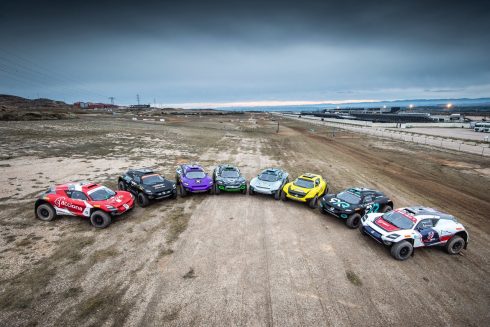A NEW type of motorsport launched this year, and its competitors are racing not just for glory, but also for the planet, writes Shannon Chaffers
Spanish businessman Alejandro Agag spearheaded the creation of this enterprising new series called Extreme E, which aims to chart an innovative path forward for a sport that has come under increasing scrutiny for its negative environmental impact.
It features nine teams of two, with drivers racing all-electric SUV vehicles in different locales across the world while also highlighting climate change’s impact on those areas.
The inaugural season kicked off in April with a race in Saudi Arabia before heading to Senegal in May. A race in Greenland and two more undetermined locations are set to follow later this year.
Agag, who also founded the all-electric racing competition Formula E, is seen as a leading figure in helping motorsport confront the issue of climate change.
With his track record of success, many high profile names jumped aboard his latest creation. Formula 1 superstar Lewis Hamilton and former F1 champions Nico Rosberg and Jenson Button each own Extreme E teams, and Button also competes as a driver.

Star names don’t stop there, with the competition featuring other high profile drivers, including many from Spain.
Champion motorcycle racer Laia Sanz and two-time world rally champion Carlos Sainz are the drivers for Spain’s Sainz XE team.
Accomplished rally driver Christine Giampaoli Zonca joins Oliver Bennet of the UK to form the Barcelona-based Hispano Suiza Xite Energy Team (pictured below).

Finally, up and coming rally driver Cristina Gutierrez is competing alongside French racing legend Sebastian Loeb for Hamilton’s UK-based team, X44
In addition to climate change, the competition has also taken a stand on gender equality, as each team has one female and one male driver.
Gender inequality is a well-known issue in the sport, so this move has earned praise in the racing community. But it has also left some to criticize the organizers for staging the first race in Saudi Arabia, a country which has been condemned for its treatment of women’s rights activists.
Some were also skeptical of whether racing across endangered climates would do more harm than good, although Extreme E insists it leaves its locations better off than when they found it.
Off the track criticism was not the only challenge the series faced in its opening race, which took place in the desert near the city of Al-Ula, and stressed the impacts of desertification. The ship used to carry the Extreme E vehicles and equipment (and which also serves as a laboratory for climate scientists), narrowly avoided being held up by the Suez Canal blockage, and the formats of the qualifying race and finals required last-minute alterations due to concerns about dust.
Many viewed the end result as a success, though, with Rosberg X Racing drivers Molly Tyler and Johan Kristofferson emerging victorious in a captivating contest, and the teams also partaking in a beach clean up and turtle conservation efforts in the area.
May’s Ocean X Prix in Lac Rose, Senegal, went more smoothly, with Rosberg’s team earning another dramatic victory on the oceanfront course. The race aimed to highlight climate change’s impact on marine ecosystems, and Extreme E has joined forces with a local NGO, Oceanium, to plant one million mangrove trees in Senegal.
The next race will take place in Kangerlussuaq, Greenland in August.

Focus was then meant to shift to South America in the autumn, before a pandemic-enforced postponement of races in Argentina and Brazil derailed those plans.
There is hope these countries will feature next season, but for now Extreme E organizers are searching for new courses, with a race in Scotland in consideration.
While the official competition didn’t take place in Spain this year, the country has already had a taste of Extreme E action by way of last year’s test race at the MotorLand Aragón track.
Shining a light on how climate change has worsened drought and forest fires in the region, Rosberg’s team planted one hundred trees in the area.
In addition to Rosberg, others involved in Extreme E have worked to fight climate change within Spain. Acciona, the energy and infrastructure company sponsoring the Sainz XE team, recently helped develop a hydrogen powered energy system that can be used to make Spain’s construction sites more environmentally friendly.

Meanwhile, Hispano Suiza has developed all-electric luxury vehicles, with technological insight gained from Formula E.
Along those lines, many involved in Extreme E hope that the technology used to power its race cars, like the zero-emission hydrogen fuel cells that charge them, will spark more environmentally-friendly innovations throughout the automobile industry.
Mitigating the impacts of climate change through motorsport seems an ambitious task whose feasibility remains to be seen.
But it is clear that those involved in Extreme E are dedicated to doing just that, while also delivering the entertainment racing fans crave.
READ ALSO:
Ride like a girl: Meet two Spanish women busting stereotypes in the motorsport world
Click here to read more Sport News from The Olive Press.








